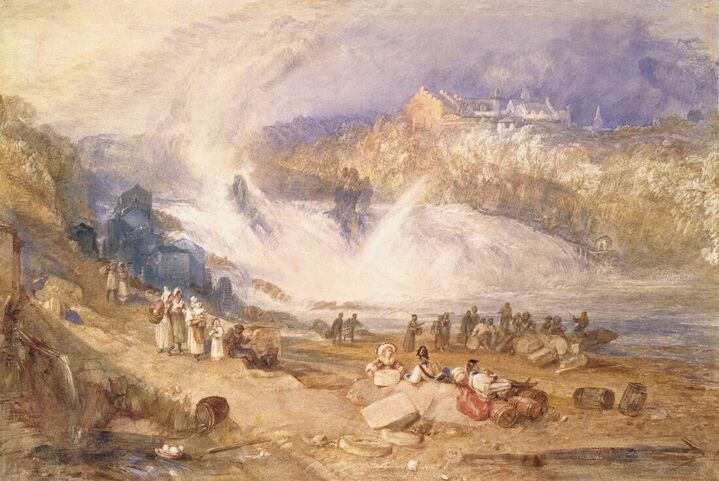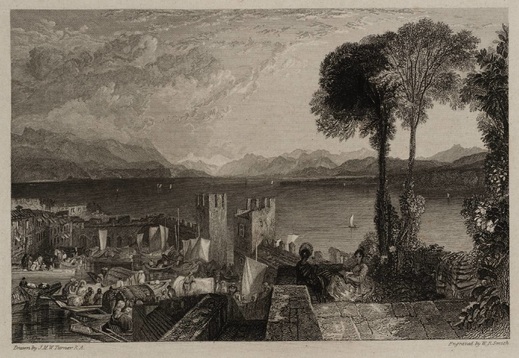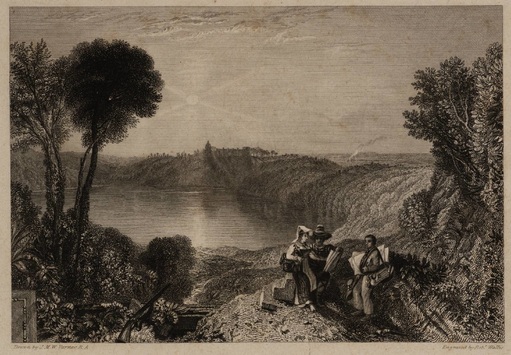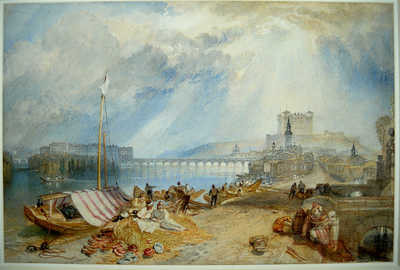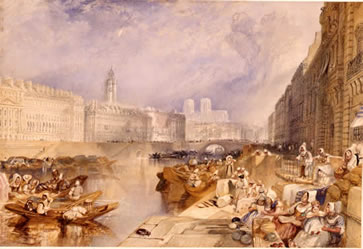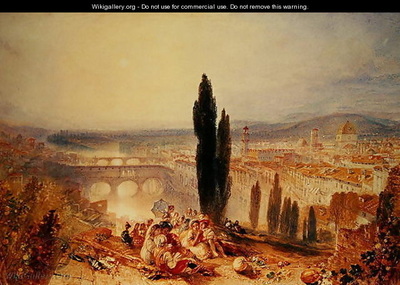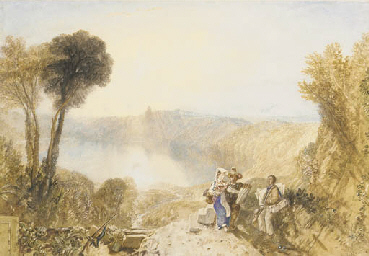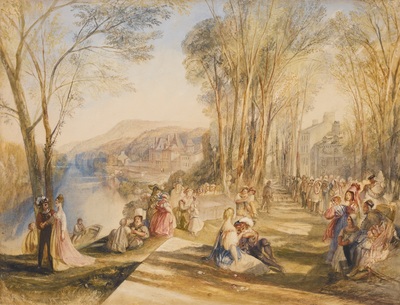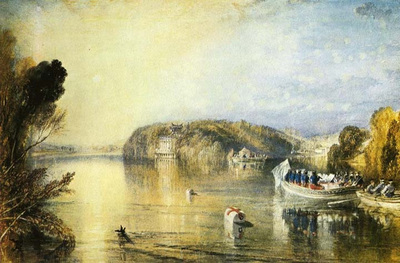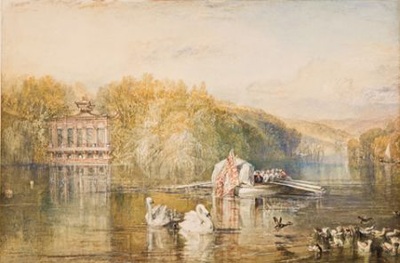The Keepsake
During the 19th century the publishing industry rapidly expanded to satisfy the demands of an increasingly literate and leisured population and The Keepsake was one of the most successful of the literary journals at that time. Published each autumn from 1828 to 1856 it was an illustrated anthology of poetry and prose compiled by Charles Heath which aimed “to render the union of literary merit with all the beauty and elegance of art as complete as possible.”
It was generally purchased as a gift for middle-class women as described in Middlemarch by George Eliot where she has Ned present Rosamond with the latest volume:
"He had brought the last Keepsake, the gorgeous watered-silk publication which marked modern progress
at that time; and he considered himself very fortunate that he could be the first to look over it with her,
dwelling on the ladies and gentlemen with shiny copper-plate cheeks and copper-plate smiles, and pointing
to comic verses and capital and sentimental stories as interesting."
Charles Heath exploited the newly created technique of steel engraving to reproduce art at an economical cost, and thus The Keepsake, through its popularity, fostered in the general public an appreciation of fine art. Turner contributed 17 illustrations to The Keepsake from 1828-37, including two for the 1829 volume (see below). Of these contributions, nine of them were reproduced from paintings owned by Windus: Florence (1828), The Lake of Albano, The Lago Maggiore and two versions of Virginia Water (1829), Saumur and Nantes (1830), Chateau (Palace) of Belle Gabrielle (c1830) and Schaffhausen on the Rhine (1833).
Images of the engravings are in the gallery below.
It was generally purchased as a gift for middle-class women as described in Middlemarch by George Eliot where she has Ned present Rosamond with the latest volume:
"He had brought the last Keepsake, the gorgeous watered-silk publication which marked modern progress
at that time; and he considered himself very fortunate that he could be the first to look over it with her,
dwelling on the ladies and gentlemen with shiny copper-plate cheeks and copper-plate smiles, and pointing
to comic verses and capital and sentimental stories as interesting."
Charles Heath exploited the newly created technique of steel engraving to reproduce art at an economical cost, and thus The Keepsake, through its popularity, fostered in the general public an appreciation of fine art. Turner contributed 17 illustrations to The Keepsake from 1828-37, including two for the 1829 volume (see below). Of these contributions, nine of them were reproduced from paintings owned by Windus: Florence (1828), The Lake of Albano, The Lago Maggiore and two versions of Virginia Water (1829), Saumur and Nantes (1830), Chateau (Palace) of Belle Gabrielle (c1830) and Schaffhausen on the Rhine (1833).
Images of the engravings are in the gallery below.
Falls of the Rhine at Schaffhausen: the watercolour accompanied an unsigned article on viewing the falls by moonlight.
The Keepsake 1833 @ Birmingham Museum and Art Gallery
The Keepsake 1833 @ Birmingham Museum and Art Gallery
The Keepsake 1829 |
|
Stanzas Robert Southey
Addressed to J M W Turner, R. A., on His View of the Lago Maggiore from the Town of Arona |
Two paintings by JMW Turner
Arona, Lago Maggiore and Lago Albano |
|
Turner, thy pencil brings to mind a day
When from Laveuo and the Beuscer Hill I over Lake Yerbanus held my way In pleasant fellowship, with wind at will; Smooth were the waters wide, the sky serene, And our hearts gladdened with the joyful scene;-- Joyful, for all things ministered delight,-- The lake and land, the mountains and the vales; The Alps their snowy summits reared in light, Tempering with gelid breath the summer gales; And verdant shores and woods refreshed the eve, That else had ached beneath that brilliant sky. To that elaborate island were we bound, Of yore the scene of Borromean pride,-- Folly's prodigious work; where all around, Under its coronet, and self-belied, Look where you will, you cannot choose but see The obtrusive motto's proud "Humility!" Ear off the Borromean saint was seen, Distinct, though distant, o'er his native town, Where his Colossus with, benignant mien Looks from its station on Arona down; To it the inland sailor lifts his eyes, From the wide lake, when perilous storms arise. But no storm threatened on that summer day; The whole rich scene appeared for joyance made; With many a gliding bark the mere was gay, The fields and groves in all their wealth arrayed: I could have thought the sun beheld with smiles Those towns and palaces and populous isles. From fair Arona, even on such a day, When gladness was descending like a shower, Great painter, did thy gifted eye survey The splendid scene ; and, conscious of its power, Well hath thine hand inimitable given The glories of the lake and land and heaven. |
This engraving of Turner's painting, Lake Albano, appeared in the same edition of The Keepsake.
|
A selection of Turner's paintings from the Windus collection that appeared in The Keepsake
For more information on The Keepsake
